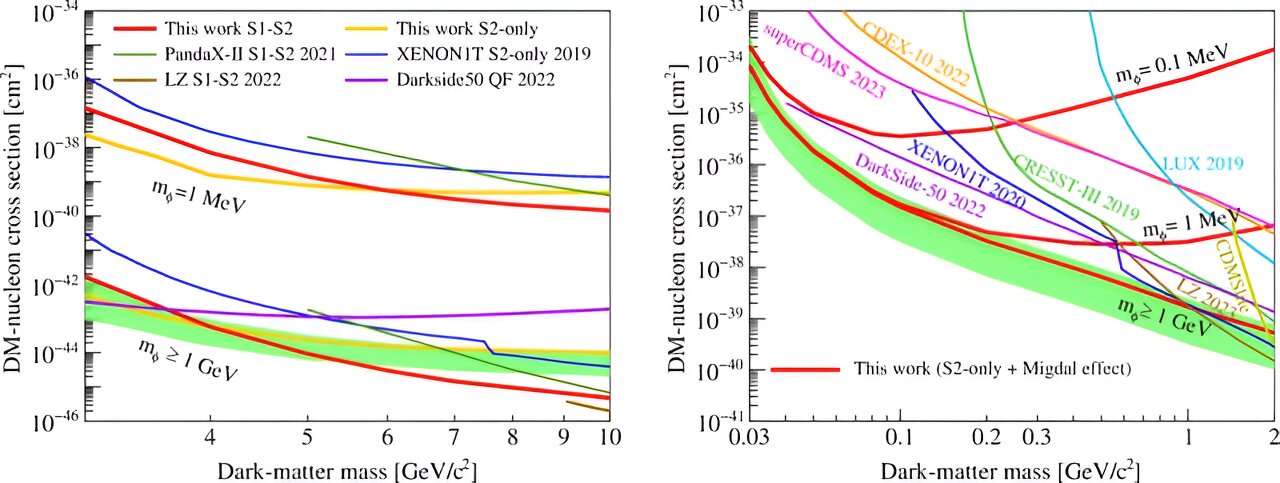In a new study, scientists report results from the PandaX-4T experiment, setting stringent limits on dark matter–nucleon interactions using low-energy data and the Migdal effect, ruling out significant parameter space for a thermal relic dark-matter model.
Dark matter is one of the great mysteries in science, eluding direct detection and defying traditional models. It is so shrouded in mystery that we don’t even know what dark matter particles are and what their mass is.
This is because dark matter particles don’t interact with light, making them impossible to detect. The leading candidates for dark matter particles are axions and weakly interacting massive particles (WIMPs).
In the depths of the China Jinping Underground Laboratory, the PandaX-4T experiment stands as a beacon in the quest to unravel the mysteries of dark matter. The experimental program employs ‘xenon detectors’ to explore dark matter, study neutrinos, and investigate new physics, such as neutrinoless double beta decay.
Now, scientists have reported progress in the search for dark-matter–nucleon interactions using the PandaX-4T. The findings are published in Physical Review Letters.
2023-11-26 19:41:04
Source from phys.org
